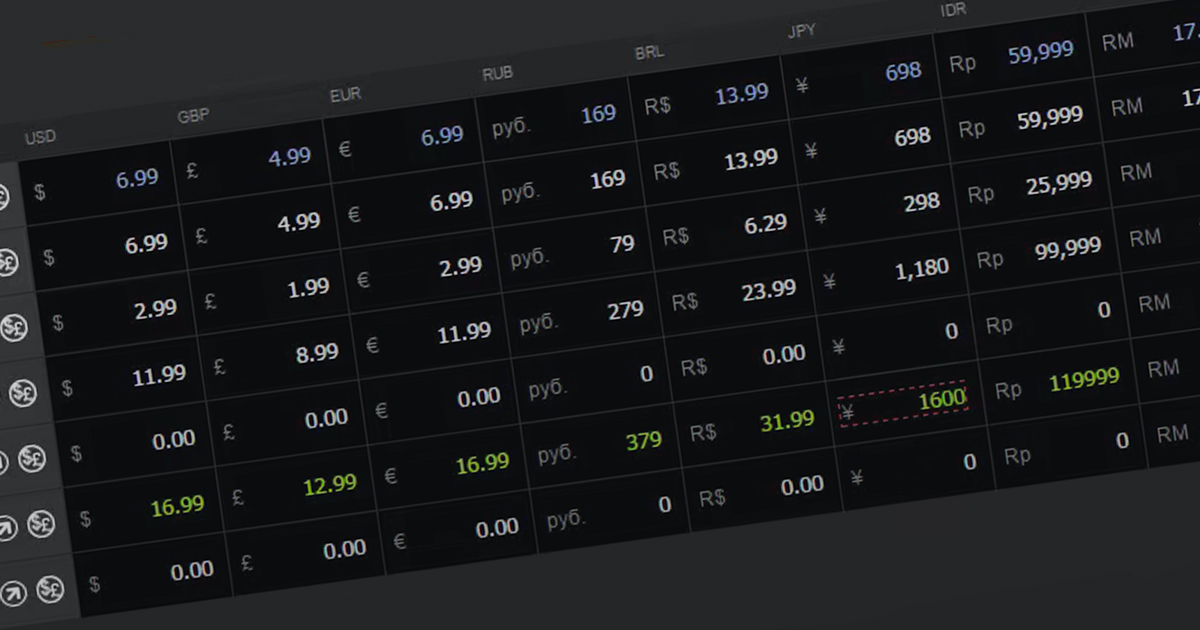Valve says Steam’s regional pricing issue runs deeper than exchange rates, pledges to update recommendations more often
Valve has committed to updating its regional pricing recommendations for Steam developers more frequently. The company says this problem is bigger than just foreign exchange rates and should reflect different economic circumstances.

What will change in Steam regional pricing recommendations?
In a new update to its Steamworks documentation, Valve noted that it will refresh price suggestions “on a much more regular cadence.”
The company hopes to keep pace with economic changes over time. However, the frequency of these pricing updates remains unclear.
“Many games choose to ignore our recommendations and determine their own pricing in each currency, and that’s just fine,” Valve’s post reads. “But we hope the recommendations are a useful data point for developers who don’t have the time or interest to research pricing in each currency themselves.”
Update (October 25): Valve has revealed new recommended regional pricing for nearly all supported currencies. For example, updated recommended prices for $60 games in Turkey and Argentina are up over 450%. Other regions saw significant increases as well.
How does Steam regional pricing work?
- When developers set USD prices for their games, Steam offers a set of recommendations in other currencies.
- Devs are free to use these recommendations for all regions or set their own prices.
- It is worth noting that if any regional currency is missing a price, the game won’t be available for purchase for players in this country.
- Valve notes that it makes price suggestions based on more than just foreign exchange rates: “Our process […] goes deeper into the nuts and bolts of what players pay for the goods and services in their lives.”
- The company adjusts purchasing-power parity and consumer price indexes in different countries and regions.
- This helps compare prices and costs more broadly, taking into account multiple economic factors. If it weren’t for regional prices, many players from certain regions wouldn’t be able to afford to buy games.
The bigger picture
- Regional pricing not only helps players across the globe, but also encourages many people to abuse the system by changing their region to buy games at lower prices.
- This issue not only affects the game’s revenues but also hurts players who are really located in these countries. Developers and publishers sometimes increase regional prices to prevent abuse.
- For example, Dead Cells maker Motion Twin recently said it was forced to raise prices in Argentina and Turkey, which have one of the lowest regional rates, because a “significant portion of sales in the last year came from these two countries.”
- Last month, Chinese studio Duoyi Games also raised the price of its first-person roguelike Gunfire Reborn in some regions. “Sales in Turkey are 2-3 times larger than the number of players in the region, but pricing in Turkey is only one-fifth of the price in the United States,” the statement reads. “Although Steam has stepped in and taken approach to prevent users from buying games across borders, the problem has not been alleviated.”
- Mike Rose, the head of indie publisher No More Robots, recently opened up about the region-swapping issue using the zoo sim Let’s Build a Zoo and its Switch launch as an example.
- Valve has also tried to combat this issue by making certain changes to Steam’s policy. For example, players can only switch their account’s region only once in three months. On top of that, all purchases must only be completed using a payment method from the current country.